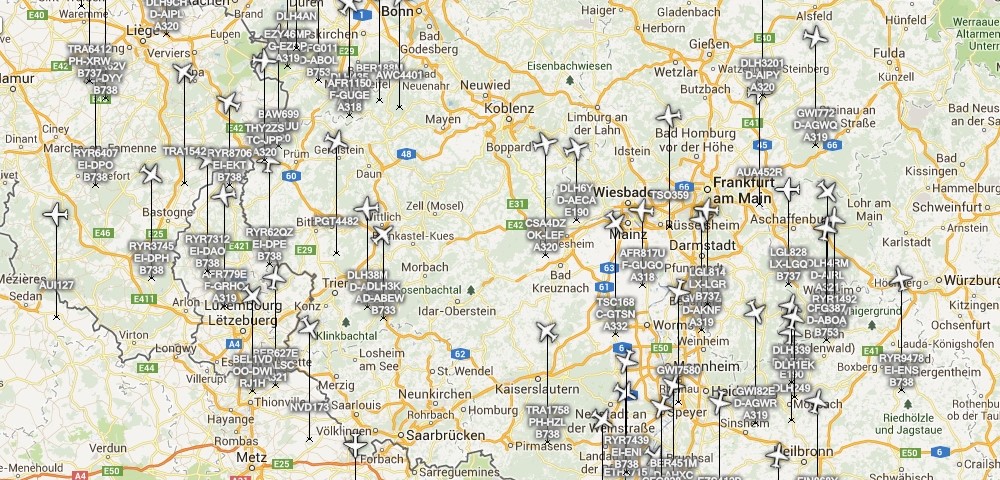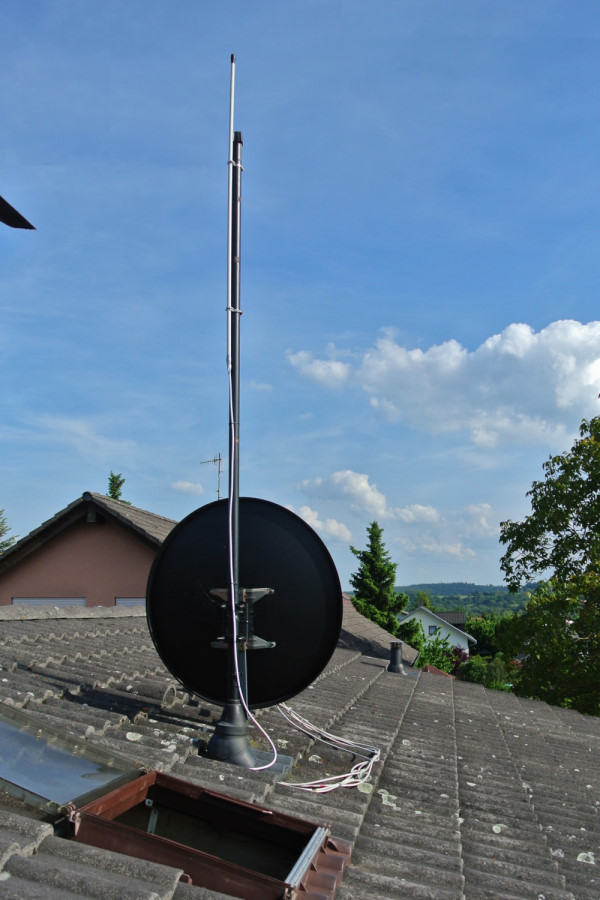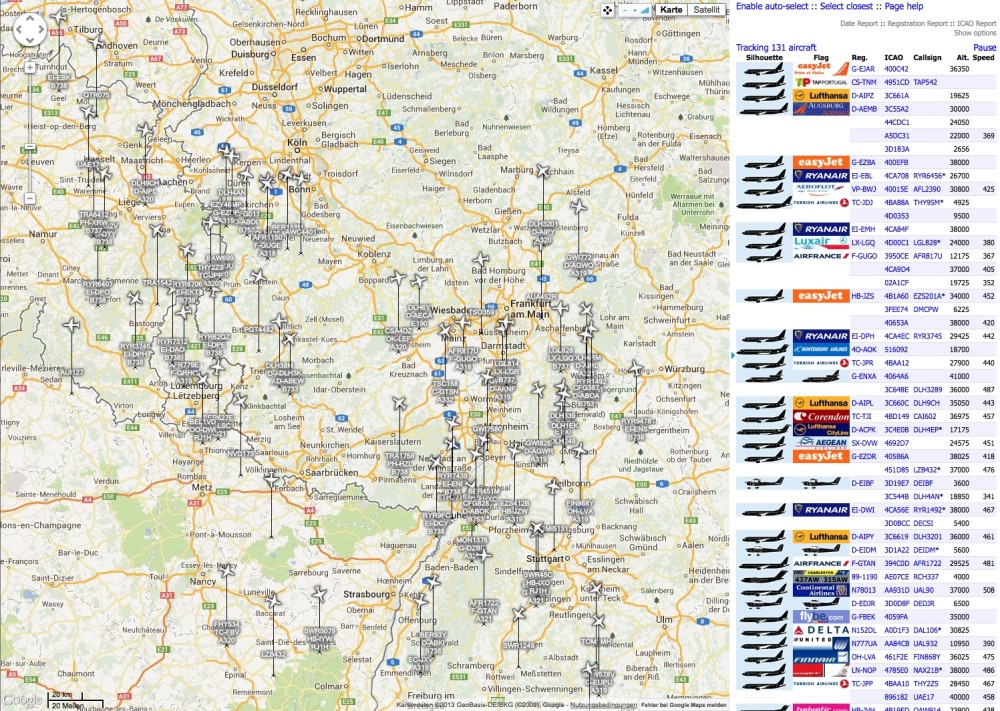The Story
All planes with a weight above 5,700 kg or a max cruise of over 250 knots are equipped with the Automatic dependent surveillance-broadcast (ADS-B) which is a surveillance technology for tracking aircrafts. The aircraft determines its own position via GNSS and periodically broadcasts the data via a radio frequency on 1090MHz. Some DVB-T sticks with the RTL2832/R820T chip from Realtek can not only receive the frequencies used for television but also the 1090MHz. Building a "virtual radar" with some cables and a DVB-T stick.. sounds like a nice low-cost project for me.
Coaxial collinear antenna
The main part of the construction is a 50 Ohm coaxial cable. My antenna consists of twelce elements with a certain length. This length has to be suitable for the frequency I want to receive which is 1090MHz.
The elements are connected together to build a chain in which the outer conductors and inner conductors are counterchanged between two adjacent elements.
DVB-T Stick & Amplifier
I bought a DVB-T Stick with Realtek RTL2832/R820T chip to receive the ADS-B messages. The signal is aplified with a Low Noise Amplifier from LNA4ALL.
Installation
The antenna in the PVC pipe is installed on the mounting for the satellite dish.
The Software
Special driver for the DVB-T stick are required to receive the signals. The tool "ADSB#" is used as decoder for the incoming signals which makes the data available on port 47806. The "Virtual Radar Server" displays the position of the airplanes in the browser window using Google Maps. On an average day I can see around 130 airplanes with my system.


